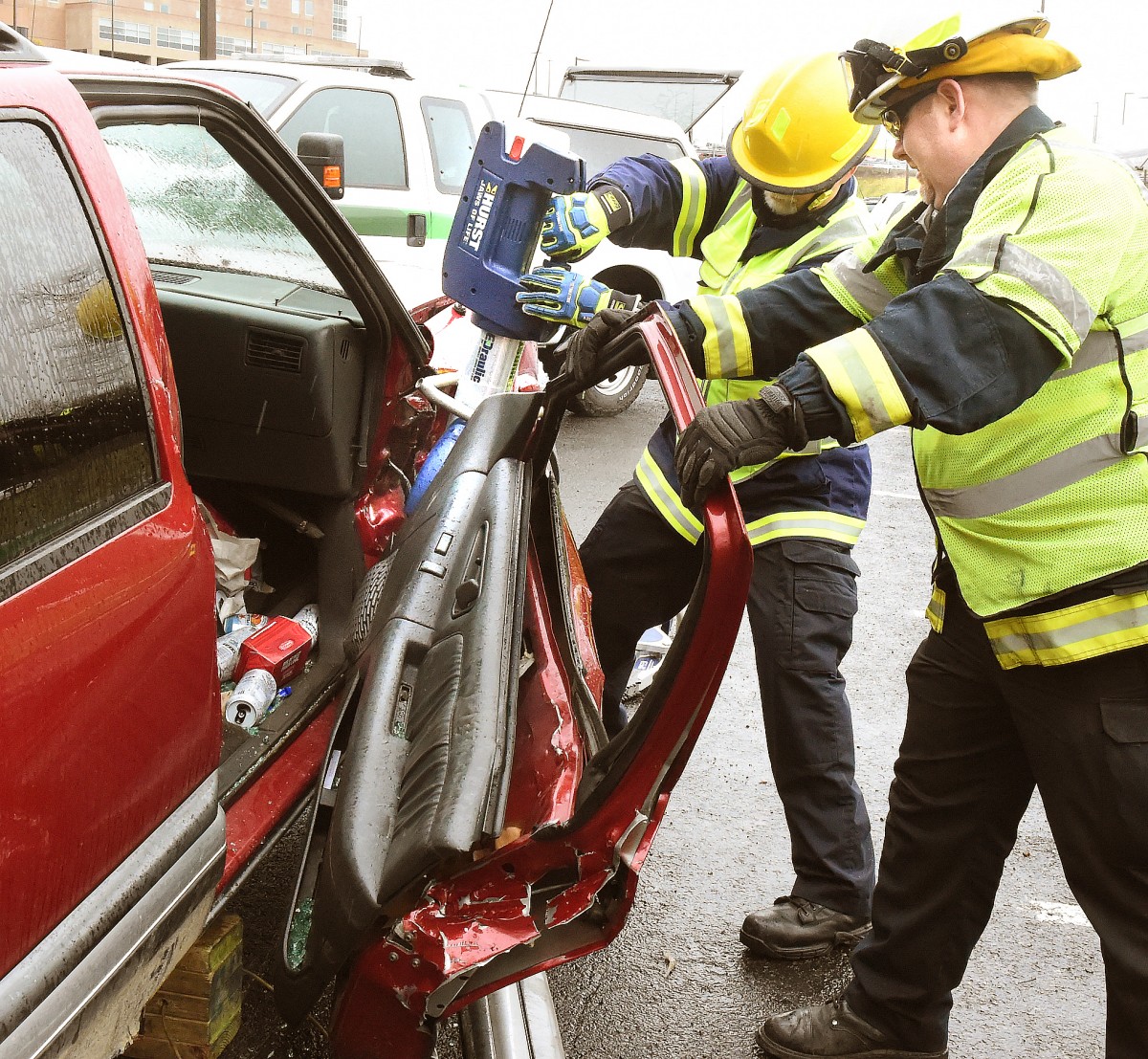MORGANTOWN — Imagine a situation where you were in a car accident, you’re trapped in the mangled metal of the vehicle and EMS workers arrive, but their tools aren’t strong enough to cut the metal and get to you.
Now, that will no longer be a problem.
Mon Health EMS recently purchased new rescue equipment that will better assist rescuers in removing people from cars that were in an accident.
“Six years ago, we purchased some new tools where you actually had to physically hook them up to power sources and hoses that were also hydraulic,” said Daniel Six, a paramedic with Mon Health EMS. “The problem is, the car manufacturers are making their cars much stronger with the high-strength steel that even (those tools), six years ago, were not able to handle some of the steel that they were putting in their automobiles.”
Six said these new battery-operated tools are built specifically to handle the high-strength steel that automakers are now using.
The new equipment includes a spreader that operates with a force of 134,900 pounds, a steel cutter, a ram with 28,600 pounds of pushing force and a strong arm that uses 6,744 pounds of spreading force for smaller jobs.
“We purchased these for the benefit of the residents of the county,” Six said.
Each year, Mon Health EMS responds to an average of 60 calls that require vehicle passengers to be extricated. Those accidents differ in varying levels of severity, which often means that time is of the essence in the more severe circumstances.
“An advantage is that they’re very quickly deployed,” Six said. “All you have to do is pull them out and push a button, and they’re ready to go. We don’t have to hook the hoses up, charge the power up or use gasoline.”
Since they were purchased a couple months ago, the tools were used for two jobs, the most recent one being at an accident on Grafton Road a couple weeks ago, when the frame of a vehicle had to be removed in order to get to the passenger.
“Automakers are making their cars stronger, of course with safety in mind, to keep people inside the car and preserve as much life as possible,” Six said. “But by doing that, they’ve made our job very difficult, so we had to go to a stronger tool to be able to extricate people that needed extricated.”




